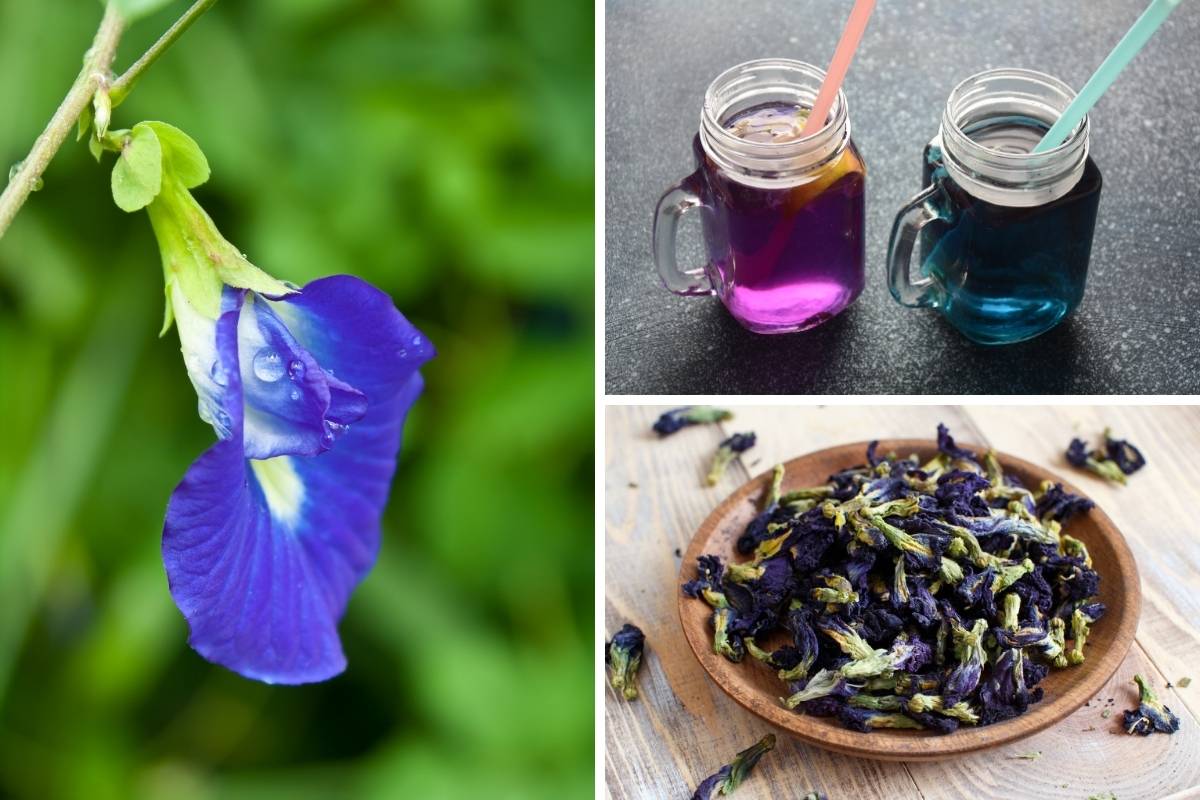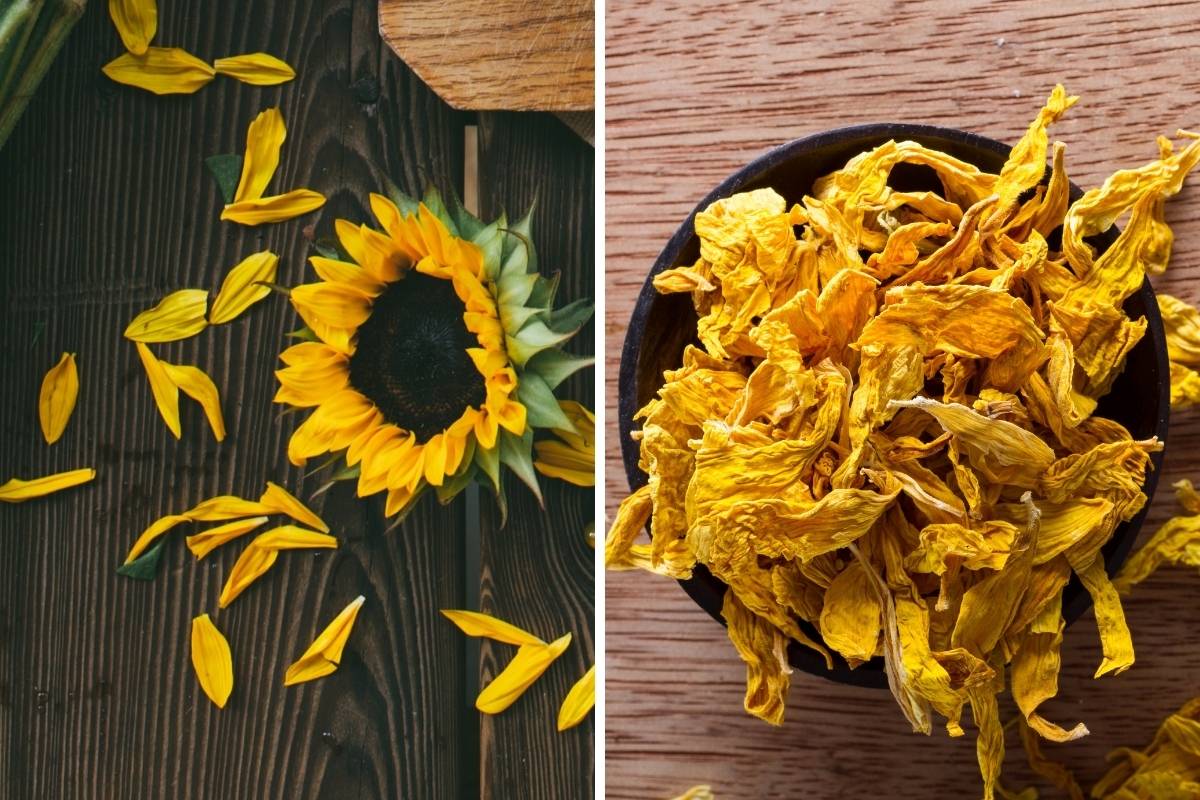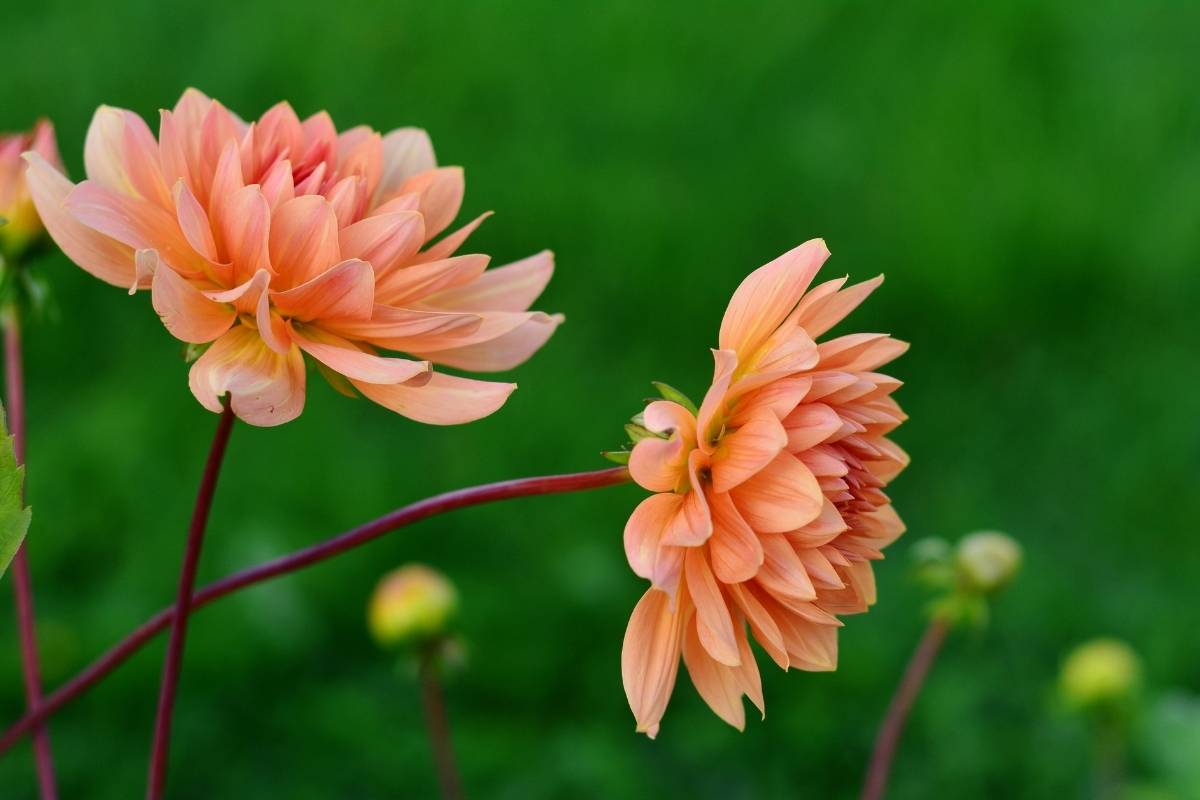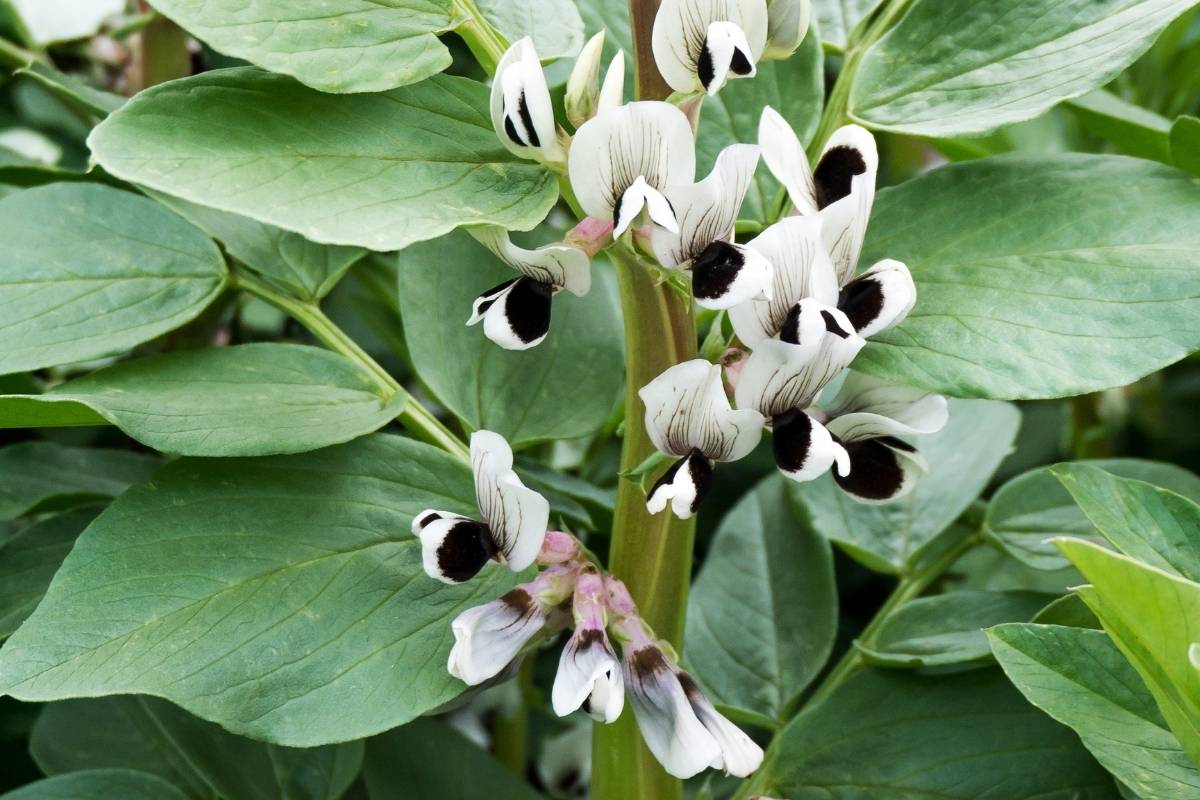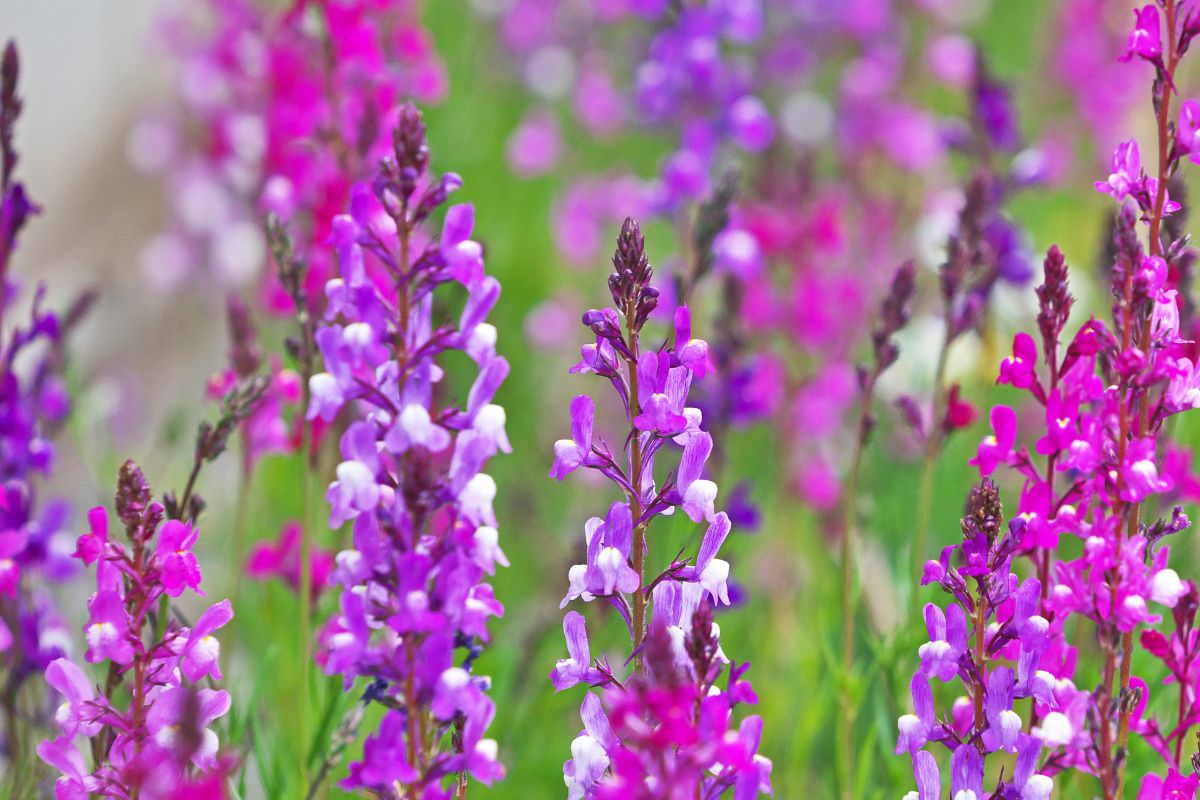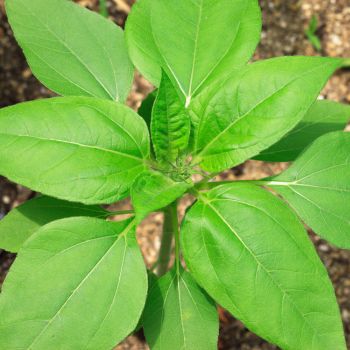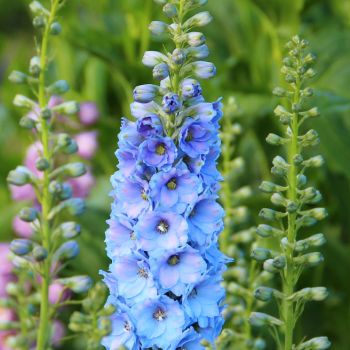It’s now fairly common to see the flowers of garden stalwarts such as violas, calendulas and nasturtiums used as tasty and colourful garnishes and additions to salads and other dishes. But there are also some less well-known floral candidates that are frequently grown in the garden and can add unique and interesting colours and flavours to your drinks or dishes.
Read on to learn about five unusual edible flowers, and how to use them.
Blue Butterfly Pea
The blue butterfly pea (Clitoria ternatea) is a perennial tropical vine that is grown as an annual in cooler and temperate climates. Its brilliant blue flowers are used widely in areas as diverse as cosmetics and cocktails. The health benefits of eating the flowers or its extracts are also the subject of research, so blue butterfly pea could yet prove to be a healthy as well as a colourful addition to your diet.
The flower is generally used to make teas or cocktails or to add colour to foods, as its taste is bland or non-existent. The colour is best extracted by steeping either fresh or dried flowers in hot water, sometimes combined with sugar to make a syrup. What makes the colouring unique is that it will change from a sapphire blue to a clear pink when the solution becomes acidic. This can be achieved by adding a small amount of citrus juice or other acidifiers.
Blue tea, also called Thai blue tea, can be made by adding 4 grams of dried or fresh flowers to a cup of hot water and allowing it to stand for 10 to 15 minutes before straining out the dried flowers. Add some citrus juice or honey to sweeten the flavour (remembering that citrus will change the colour from blue to pink).
The flower’s inclusion in cocktails makes the most of its chameleon-like, colour changing properties. This quality has been harnessed by distillers who have produced a blue gin that turns pink when mixed with acidic tonic water. The same effect can be achieved in non-alcoholic drinks by adding lemon juice or lemon syrup to a base of water.
Sunflower
Sunflower seeds have long been used as a tasty snack when roasted or to make sunflower oil or butter, but the flower petals of the sunflower plant are also edible. In fact, every part of the sunflower, a relative of Jerusalem artichoke, is edible, from its tuberous roots to its stems, leaves and flower buds.
Sunflower petals make an excellent addition to salads when used sparingly and are said to have a bittersweet, nutty flavour when eaten raw. What’s more, sunflowers have been shown to possess antioxidant, anti-inflammatory and anti-microbial properties.
Dahlias
Dahlia tubers are actually a very old edible crop and are thought to have been a part, if only a small one, of the human diet for thousands of years in some parts of the world. They are rich in vitamin B6, riboflavin and potassium, as well as being a source of inulin (a word of warning on inulin: it is poorly tolerated by some people so start with small amounts of tuber and see how you get on).
The flavour of dahlia tubers changes with storage, and different varieties also reportedly have slightly different flavours. The best tubers for eating are those that are comparable in size to a boiling potato and from plants that have been grown organically. Generally, they should be cooked like a sweet potato or Jerusalem artichoke and can be baked, boiled, mashed or roasted.
You may, of course, not fancy eating your prized (and expensive) dahlia tubers. Thankfully, dahlia flowers are also edible; perhaps no surprise as they are relatives of sunflowers. Use individual petals as the centres of the flowers are bulky. Dahlia flowers are said to have flavours ranging from spicy apple to carrot, and can be used in salads or drinks to add both an unusual tang and a dash of brilliant colour.
Broad Beans
Broad beans are usually eaten as a seasonal treat in late winter or early spring. The shoots and leaves are also a tasty crop when eaten fresh or cooked, but it’s less well known that broad bean’s pretty white with black or purple spotted flowers can also be eaten. They are sometimes sold online or at farmers’ markets as a bit of a delicacy. Unlike many edible flowers, broad bean blooms have a fresh, mild beany taste with a hint of sweetness that’s an attractive flavour in its own right.
The flowers can be eaten fresh in salads or even used as decorations on cakes and puddings. They can also be steamed and combine well with fish and poultry dishes.
One drawback of picking your own broad bean flowers is, of course, that your crop of broad beans is likely to be reduced, particularly if you pick a lot. If you’re planning to harvest a crop of flowers, plant a larger number of seeds. Alternatively, take just a few flowers to enjoy as a treat.
Linaria
Linaria flowers are another edible that is sometimes sold by upmarket websites or that you may find at fancy farmers’ markets. There are scores of varieties in the Linaria genus with a long history of human consumption.
Linaria is also known as ‘mini snapdragon’, and the flowers could be mistaken for a snapdragon and are similarly lightly scented. They are best used as decorative embellishments to savoury dishes. Alternatively, dry the flowers and use them as flower confetti to decorate cakes, pastries and desserts.
Edible flowers can add interest to any summer drink, salad or dessert. Why not be a trendsetter by growing some of these lesser known edible blooms?
